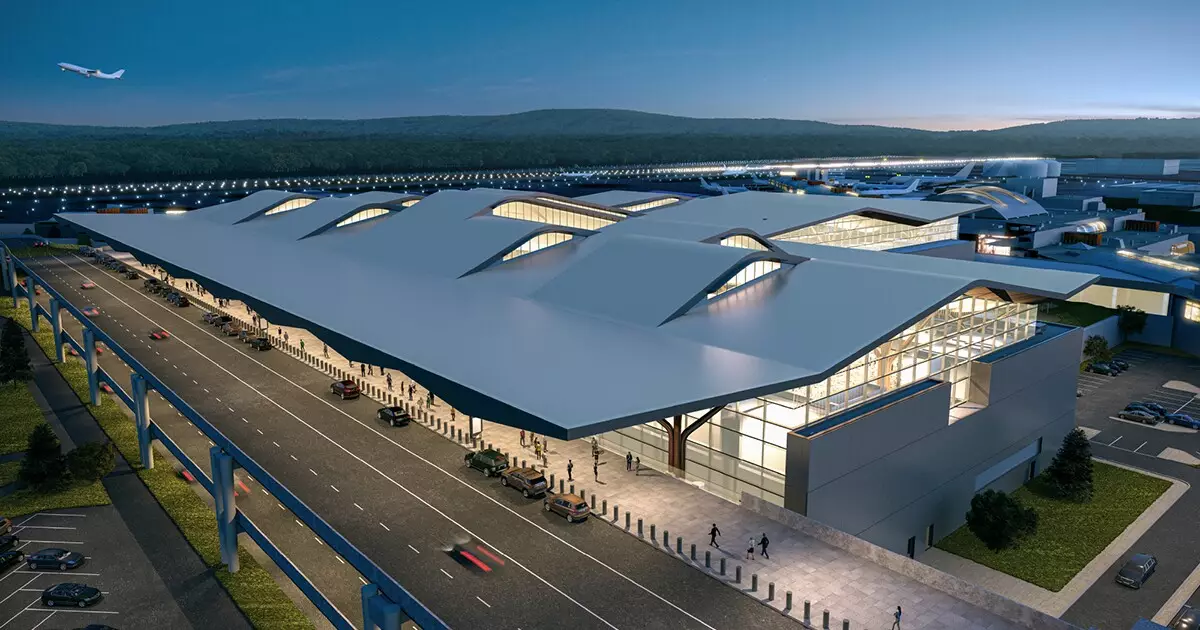Pittsburgh International Airport: 5 Reasons Why the New Terminal is a Game-Changer for the City

Pittsburgh International Airport (PIT) is on the verge of a significant transformation. With the impending opening of a new terminal, the airport aims to redefine not just its functionality but also the city’s perception in the minds of travelers. Historically, airports have been unremarkable entry points. However, PIT’s leadership envisions a terminal that serves as a “new front door” to the city—a bridge between what Pittsburgh was and what it aspires to be.
This rebirth comes after a long period of operational and reputational struggles, especially following USAirways’s departure that left the airport grappling with an identity crisis. By focusing on origin-and-destination travel—a necessity given the current demand—PIT is not merely adapting; it is striving to elevate Pittsburgh’s identity. This undertaking is vital for a city that has long been stereotyped as a relic of the industrial age. A more inviting terminal can make visitors feel like they’re stepping into a city full of innovation and creativity.
Financial Smarts: The Backbone of Progress
The financing behind the terminal project—an impressive $421.9 million bond deal—is a testament not only to PIT’s current leadership but also the lessons learned from past misadventures. The deal consists of tax-exempt bonds and federally taxable bonds, rated favorably by Moody’s, Fitch, and KBRA. This financial acumen stands in stark contrast to the era when the airport endured substantial burdens without a coherent plan.
Moreover, the airport’s unique revenue streams—including gas extraction from local deposits—demonstrate innovative approaches to bolstering financial health. Even direct state support through casino revenue speaks to the determination to keep Pittsburgh on its feet. While some criticize such aid as a crutch, one could argue that the identifies of the Pittsburgh International Airport and the city itself are intertwined; ensuring the airport’s sustainability is a community imperative, not merely a financial one.
Visual Appeal Versus Functional Needs
Beyond finances, the aesthetic achievements of the new terminal cannot be overlooked. A blend of symbolic architecture—reflecting Pittsburgh’s many bridges and its rolling hills—infuses the structure with a local flavor that stands to make a lasting impression. In a day and age where travelers have become increasingly discerning, a visually appealing airport can sway opinions and foster lasting connections to the city.
However, the focus must remain not just on beauty but also function. A terminal designed for modern needs—spacious security areas, added parking, and direct access to gates—addresses the inconveniences seen in its predecessor. It’s essential to bridge the gap between aesthetic value and pragmatic usability. This balance demonstrates that PIT is not simply resting on a pretty facade; it’s committed to fundamentally enhancing the traveler experience.
Learning from the Past: Pitfalls and Progress
The history of Pittsburgh International Airport offers both cautionary tales and lessons in resilience. Once envisioned as a bustling hub for USAirways, a series of misfortunes—from 9/11’s devastating impact on air travel to the eventual bankruptcy of the airline—reshaped the airport’s trajectory toward a more localized passenger base. Today, over 90% of travelers either start or end their journey in Pittsburgh—a testament to a successful pivot, yet a reminder that adaptability is crucial.
The lessons from airports like Cincinnati and Memphis shouldn’t be dismissed. Their revitalization efforts mirror a similar path PIT is currently traversing. The growing costs of this terminal modernization might raise eyebrows, particularly given that it’ll drive up costs per enplanement above the standard for A-rated airports. However, the benefit of improved revenue streams and reduced future costs is undeniably potent.
A Future That Reflects a New Identity
Ultimately, the new terminal is more than just an infrastructure project; it is about reshaping public perception. While many might still associate Pittsburgh with its gritty past dominated by steel, it is imperative to showcase the vibrancy of its current identity—one that thrives on technology and innovation. CFO Eric Sprys encapsulated this well: “Sometimes people think of Pittsburgh as an old, dirty steel town, and that’s not us anymore.”
As the city aims to redefine itself, the airport must play a pivotal role in this narrative. In encouraging a wider understanding of Pittsburgh as a hub for education, healthcare, and technology, the new terminal can help signal a cultural shift, inviting travelers to explore a city rich in history yet brimming with modernity. By reflecting this new identity, PIT aims to leave an indelible mark, altering not just how visitors view the airport but how they perceive the city as a whole.





